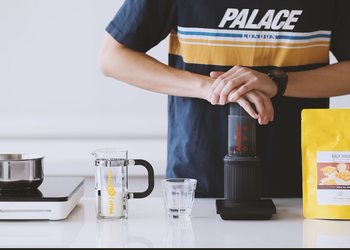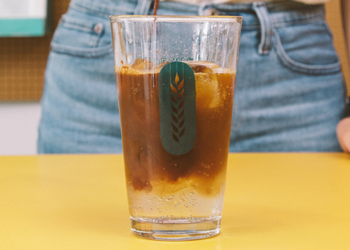THEHOOKBLOG
Coffee Fuelled Thoughts, Stories and Ideas
Recipe: A Better French Press
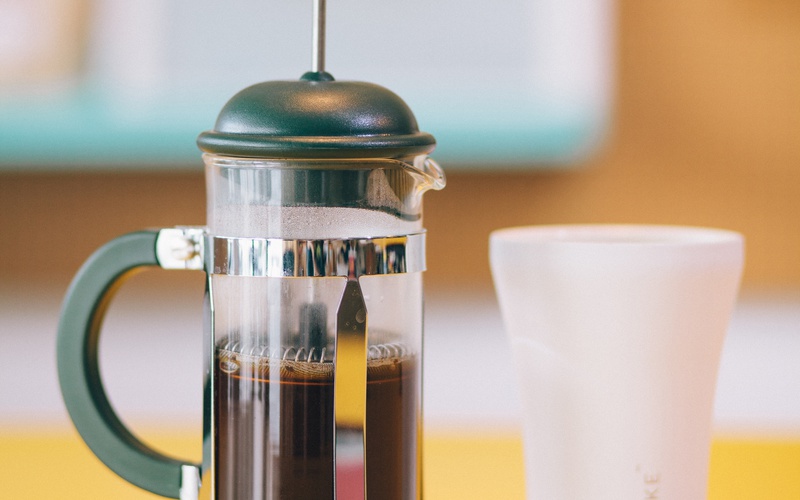
The French Press is a piece of brewing equipment that I personally started my specialty coffee experience with. It's really simple to use: place your coffee in the vessel, fill it with the desired amount of water, steep, then depress the plunger and serve – except, there might be more to this than we think and know.
Right off the bat, this is a recipe that needs time – you're gonna have to be willing to slow down, and in a way, it forces you to really care about the coffee you're brewing because you'll be treated to perhaps some of the most delicious coffee. That being said, this recipe isn't technical by any stretch – all you need is patience.
Step 1: Choose, Measure and Grind Your Coffee
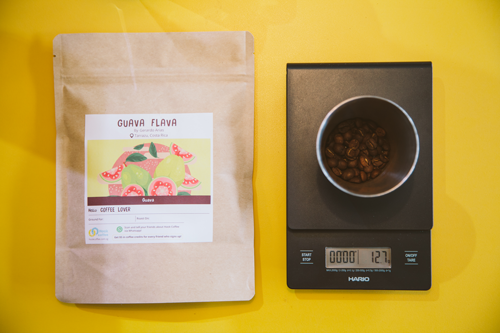
This recipe calls for a 12g dose, and will yield 180g of coffee – that's a 1:15 brew ratio. Today, I'm using our latest coffee, Guava Flava! It's got a mild sweetness and is super easy to drink – perfect for any coffee lover, and for anyone looking to get into specialty coffee.
Now here comes the important part: grind your coffee as you would for a drip coffee. This recipe calls for a lot more infusion, and the finer ground for drip works better compared to the coarser, standard grind for french press brewing.
Step 2: Prepare your Serving Vessel
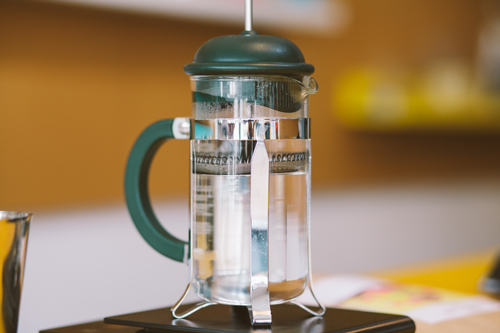
Once your water if off-the-boil, prepare your french press by warming it with the water. Plain and simple!
Step 3: Starting the Brew
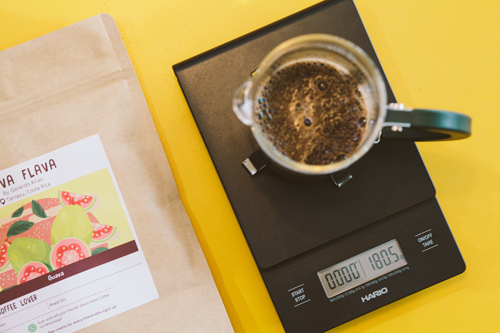
Dump the water from the previous step – you'll now be adding your ground coffee! Following that, pour 180g of your off-the-boil water into the french press. Be sure to pour in such a way that all your grounds are covered, and the motion of the water agitates your ground coffee to facilitate extraction! Once you're done, you'll notice that in a few seconds, there'll be a layer that forms on top of your brew water – this is known as the crust, and it'll be crucial in the upcoming stage, so take note!
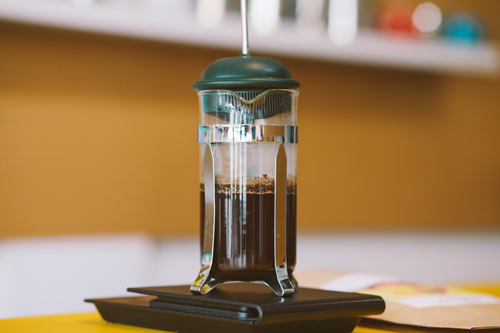
Now that your brew water is in, cover the french press with its lid, allowing your coffee to steep for 4 minutes.
Step 4: Breaking the Crust

Remember what I said about the crust in the previous stage? Now it's time to break it! All you've got to do is fold it into the rest of your brew water, like a gentle stir. 3 times is enough! Once you've broken the crust, a creamy looking layer will form:

This layer here is known as scum. Yes, it looks almost like a delicious crema, but looks are deceiving – this layer is filled with particles that make your coffee taste bitter, and you may refer to them as impurities. What you'll want to do now is skim that scum – skim as much as you can!
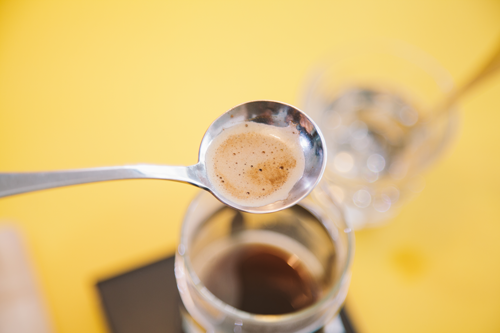
Get that scum outta your coffee – we ain't having none of that to ruin your sweet, sweet coffee!
Step 5: Letting the Dust Settle

Like I said, this brew requires a whole lotta patience: let your coffee sit for 5 minutes! The reason for doing this is to let any additional sediment settle at the bottom of your vessel, which will result in a yield that is clear, silt-free and clean-tasting. There's another upside to letting your coffee sit for another 5 minutes: as it cools, your coffee will taste sweeter. Trust me, your patience will be rewarded!
Step 6: Serve and Enjoy

See that layer at the bottom of the vessel? Yeah, that's why those 5 minutes matter – you don't want any of that in the cup that you're gonna be drinking from!
Now, I know it's really tempting, but do not depress the plunger all the way down. Okay, some of you are probably thinking, "isn't that the point of a french press though?" Well, yes, the plunger still has its place, but just because it can be depressed all the way, doesn't mean its ideal. By depressing it all the way, you're introducing movement into your coffee, and this will disturb that bed of sediment at the bottom. Instead, depress your plunger gently such that it comes into contact with the surface of your coffee, acting as a strainer or filter.
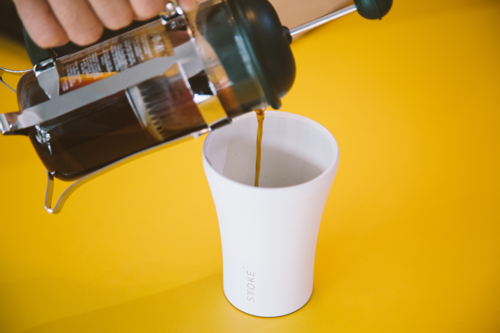
All that's left to do is to grab your favorite cup, and gently pour your coffee into it for your enjoyment.
About now, you might be thinking, is this brew really worth all the fuss? Truth be told, there's not really all that much fuss to it. As a people, at least here in Singapore, we're always in a mad rush. While the intention that underlies this mad rush comes from a value for efficiency, there are some things that cannot be done quickly. Brewing coffee this way is one of those things: it demands our time and forces us to acknowledge the merit of taking it down a notch.
This is a product that cannot be created in a state of overdrive, but the result is nonetheless rewarding. It's the type of coffee that any coffee lover should try, and the type of coffee every person caught in a mad rush should try – for their own sake, because some good things just take time.
